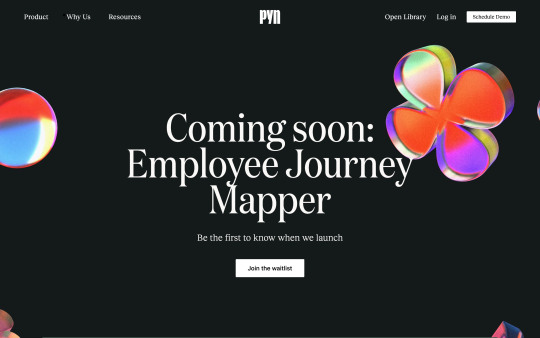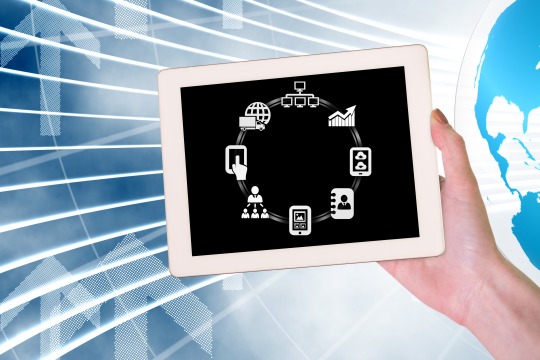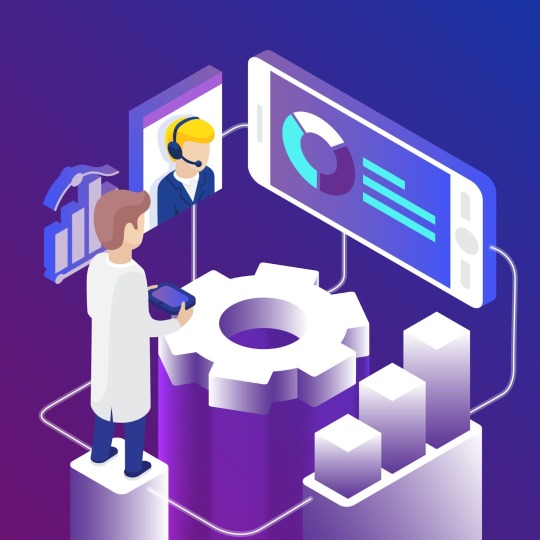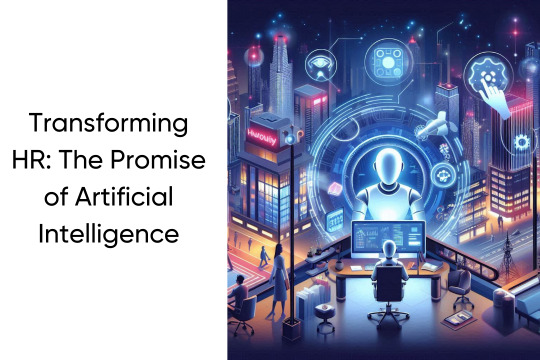#automated employee onboarding
Explore tagged Tumblr posts
Text
0 notes
Photo

https://www.pynhq.com/
#Pyn#product#Automated Onboarding#Manager Enablement#Automations#employee journey mapper#typography#type#typeface#font#Reckless Neue#Domaine Display Narrow#Founders Grotesk#Beausite Classic#2023#Week 24#website#web design#inspire#inspiration#happywebdesign
5 notes
·
View notes
Text
Streamlining Success: How Employee Onboarding Software Enhances the New Hire Journey
Streamlining Success: How Onboarding Software Enhances the New Hire Journey dives into the benefits of employee onboarding software, from automating tasks to promoting engagement. Learn how it transforms new hire experiences, boosts efficiency, and accelerates productivity.
0 notes
Text
Microsoft SharePoint and Dynamics 365 for Human Resources: Transforming Team Collaboration and HR Efficiency
In today's digital workplace, effective collaboration and streamlined HR processes are essential for maintaining productivity and a positive employee experience. Microsoft SharePoint and Dynamics 365 for Human Resources provide an integrated approach to address these needs, offering powerful tools to enhance team collaboration, automate HR functions, and empower employees with self-service capabilities. Here’s how these solutions work together to transform HR and teamwork efficiency:

1. Centralised Document Management and Team Collaboration with SharePoint
Microsoft SharePoint serves as a centralised platform where teams can securely store, share, and collaborate on documents in real time. This is especially beneficial for HR departments, as it enables them to:
Organise Key HR Documents: HR can store important files—such as policies, training materials, and onboarding documents—in a secure, searchable location, ensuring that employees have access to up-to-date information at all times.
Enable Cross-Department Collaboration: SharePoint’s collaboration features allow HR teams to work closely with other departments, such as IT and legal, to ensure compliance, update policies, and coordinate onboarding.
Enhance Remote Teamwork: With remote and hybrid work becoming more common, SharePoint offers easy access to resources from anywhere, supporting flexible work arrangements and keeping teams connected.
2. Automating HR Processes with Dynamics 365 for HR
Dynamics 365 for Human Resources is a powerful solution that automates repetitive HR tasks, enabling HR teams to focus on strategic activities that add value. Dynamics 365 for HR helps by:
Automating Employee Lifecycle Management: From onboarding to performance tracking and offboarding, Dynamics 365 helps streamline each stage of the employee journey, reducing administrative burdens and minimising errors.
Providing Self-Service Capabilities: Employees can use self-service tools to access their personal information, submit leave requests, and view benefits, reducing the need for HR intervention and empowering employees to manage their own data.
Tracking Performance and Goals: Dynamics 365 enables managers and HR teams to set goals, track progress, and provide feedback, fostering a culture of continuous development and aligning employee goals with company objectives.
3. Enhancing Employee Onboarding and Training
The onboarding experience can set the tone for an employee's entire tenure with the company. Using SharePoint and Dynamics 365 together provides a seamless onboarding process that includes:
Interactive Onboarding Portals: SharePoint allows HR teams to create customised onboarding portals where new hires can find resources, fill out paperwork, and complete orientation tasks in one place.
Automated Onboarding Workflows: Dynamics 365 enables HR to automate workflows for onboarding, assigning tasks to various departments to ensure a smooth transition. This might include IT setting up equipment, finance managing payroll, and supervisors scheduling orientation sessions.
Training and Development Tracking: HR can use Dynamics 365 to assign training modules and monitor completion, while SharePoint hosts training materials for easy access. This streamlined process improves onboarding consistency and enhances new hires’ engagement from day one.
4. Centralising Communication and Announcements
Keeping employees informed is key to building a cohesive organisational culture. SharePoint can act as a central communication hub for company news, HR announcements, and policy updates. Here’s how it benefits HR and teams:
Company-Wide Announcements: HR can use SharePoint to publish news and updates, ensuring that all employees receive timely information, from policy changes to wellness initiatives.
Departmental Communication: Specific departments can use SharePoint to share updates relevant to their teams, keeping communications organised and accessible based on user permissions.
Employee Feedback Channels: SharePoint’s collaboration tools can include feedback channels, allowing employees to share their thoughts on HR initiatives or participate in surveys, helping HR tailor policies and programs to meet employee needs.
5. Advanced Analytics for Data-Driven HR Decisions
Both SharePoint and Dynamics 365 offer data analytics capabilities that HR can leverage to make more informed decisions:
Employee Engagement Insights: Dynamics 365 can track data on employee satisfaction, engagement levels, and retention, providing HR with insights to improve workplace culture.
Performance Metrics: HR can analyse employee performance data to identify high performers, areas for development, and trends in team productivity.
Optimising HR Processes: By analysing HR process data, HR teams can identify bottlenecks or inefficiencies in workflows, making improvements to streamline operations further.
6. Enhanced Security and Compliance
Managing sensitive employee data requires strict security and compliance protocols. Microsoft SharePoint and Dynamics 365 are built with enterprise-grade security features that protect data integrity and ensure compliance:
Role-Based Access Controls: Both platforms allow HR to set access permissions, ensuring that only authorised personnel can access sensitive data, maintaining confidentiality.
Compliance with Regulations: Dynamics 365 for HR helps maintain compliance with employment laws, GDPR, and other regulations by centralising data, tracking consent, and automating compliance tasks.
Audit Trails and Reporting: Both SharePoint and Dynamics 365 provide audit trails, helping HR departments track data usage and monitor any changes for increased accountability and compliance.
7. Integrating Other Microsoft 365 Tools
The seamless integration of SharePoint and Dynamics 365 with other Microsoft 365 tools (such as Teams, Outlook, and Power BI) further boosts HR efficiency and collaboration:
Microsoft Teams Integration: HR can use Teams to communicate instantly with employees and managers, integrating with SharePoint to share documents and with Dynamics 365 to monitor HR tasks within the same ecosystem.
Power BI for Enhanced Reporting: Dynamics 365 and SharePoint data can be visualised with Power BI, allowing HR leaders to create detailed reports and gain insights to guide HR strategy.
Outlook for Scheduling and Reminders: HR teams can set reminders and manage schedules using Outlook integration, improving coordination and ensuring tasks are completed on time.
Conclusion
Microsoft SharePoint and Dynamics 365 for Human Resources bring powerful collaboration and automation capabilities that transform HR departments and team dynamics. By centralising document management, automating workflows, enhancing security, and enabling data-driven decision-making, these solutions empower HR to work more efficiently and foster a more engaged, informed, and connected workforce. Embracing these technologies enables organisations to remain agile, improve employee experience, and ultimately drive business success.
#Microsoft SharePoint#Dynamics 365 for HR#team collaboration#HR automation#employee onboarding#HR efficiency#digital transformation#HR analytics#employee engagement
0 notes
Text
Enhancing HR Efficiency with Employee Onboarding Software Solutions in India
In the present high speed business climate, proficient and organized onboarding processes are vital for both the organization and the fresh recruits. Associations, particularly in India, are progressively going to innovation for assist in improving this fundamental HR with working. One key arrangement that stands apart is collaborating with a Employee Onboarding Software Firm In India. These organizations give custom-made arrangements that smooth out the interaction, guaranteeing a smooth change for new representatives.

Why Employee Onboarding Matters
Worker onboarding establishes the vibe for a fresh recruit's involvement with an organization. A very much organized onboarding process diminishes the expectation to learn and adapt, assists the new worker with adjusting to the organization culture, and lifts efficiency quicker. On the other hand, a shoddy onboarding can bring about disarray, diminished spirit, and higher turnover rates. This is where a powerful Employee Onboarding Workflow becomes an integral factor.
The Job of Employee Onboarding Workflow in Progress
A Employee Onboarding Workflow is the foundation of an organized and predictable onboarding process. With clear cut advances that cover everything from administrative work culmination to preparing and mentorship, this work process guarantees that no part of onboarding is ignored. The right instruments work on monotonous undertakings, guaranteeing consistence and offering a reliable encounter across divisions.
Using Employee Onboarding Tools can smooth out each period of the work process — from pre-boarding, where offers are acknowledged and contracts endorsed, to the initial 90 days when new representatives get accustomed and settled. These devices help HR groups computerize desk work, relegate preparing, set updates, and track the advancement of each fresh recruit, letting loose them to zero in on additional essential HR undertakings.
How Employee Onboarding Tools Further develop Proficiency
Taking on the right representative onboarding devices changes a generally manual and frequently unwieldy cycle into a computerized, robotized, and productive work process. From conveying mechanized welcome messages to doling out preparing modules and following the advancement of recently added team members, these instruments can fundamentally diminish HR's responsibility.
A portion of the critical highlights of worker onboarding programming include:
Advanced Report The executives: Fresh recruits can finish desk work carefully, decreasing mistakes and smoothing out information capacity.
Task Computerization: HR groups can robotize warnings, tasks, and subsequent meet-ups to not guarantee anything gets lost in the noise.
Coordination with Other HR Frameworks: Most onboarding apparatuses incorporate consistently with finance, advantages, and execution the board frameworks.
Investigation and Revealing: HR experts can follow onboarding measurements, permitting them to recognize bottlenecks and consistently work on the cycle.
Picking the Right Employee Onboarding Software Firm In India
With the ascent of HR tech, various representative onboarding programming firms in India offer adaptable answers for take care of the one of a kind necessities of organizations across different ventures. These organizations give versatile, proficient stages intended to coordinate flawlessly with existing HR frameworks, conveying most extreme worth while lessening onboarding time and blunders.
While picking a product supplier, organizations ought to zero in on factors like usability, customization capacities, and client care. The right accomplice will guarantee that the framework is going without a hitch, fitting it to your organization's particular prerequisites.
Conclusion
Putting resources into a Employee Onboarding Software Firm In India can be a unique advantage for organizations. Via mechanizing and smoothing out the onboarding system through organized Employee Onboarding Workflowes and strong representative onboarding apparatuses, organizations can lessen time to efficiency, further develop worker fulfillment, and guarantee consistence. Eventually, it sets the establishment for long haul worker achievement and assists organizations with filling productively in a serious market.
#digital onboarding platform#employee onboarding software firm india#employee onboarding workflow#hr onboarding automation#new hire onboarding solution#employee onboarding tools
0 notes
Text
How HRMS Enhances Employee Onboarding Processes
An HRMS (Human Resource Management System) significantly improves employee onboarding by automating and streamlining tasks that are typically time-consuming and prone to error. With an HRMS, paperwork is digitized, allowing new hires to complete forms, upload necessary documents, and sign contracts online, eliminating the need for physical paperwork and manual data entry. The system also provides customized onboarding workflows, guiding employees step-by-step through the process with clear tasks, deadlines, and resources. This ensures new hires have a structured and efficient start, with access to key information such as training modules, company policies, and team introductions. Furthermore, HRMS platforms often include self-service portals, where employees can manage their profiles, track their progress, and directly communicate with HR or their managers. This level of automation reduces the administrative burden on HR teams and improves the onboarding experience for employees, helping them feel more connected and prepared from the beginning. With real-time data tracking and analytics, HR teams can monitor onboarding success and make necessary improvements, ensuring new employees are integrated quickly and effectively into the organization.
More info: https://ahalts.com/products/hr-management

0 notes
Text
0 notes
Text
5 Best Examples of Employee Onboarding Programs
Example 1: Pre-Onboarding Communication
The journey into a new role begins long before the first day on the job; it's in the anticipatory period leading up to it where the foundation of the onboarding experience is laid. The effectiveness of your pre-onboarding communication process can significantly influence how seamlessly new hires integrate into their roles and the organization at large.
Imagine the potential of turning the usual pre-first-day jitters into a sense of excitement and preparedness. This can be achieved by regularly connecting with your future employees, giving them a peek into what awaits them.
A series of well-crafted emails, for example, could detail what their first day would look like, introduce them to their new team, provide some fun facts about the organization, or share the company's latest success story.
Moreover, you could leverage employee onboarding software to streamline this communication. An interactive onboarding portal, perhaps, could offer a one-stop solution where new hires can explore their job details, understand their roles, complete preliminary paperwork, and even participate in virtual ice-breaking activities. This could range from a simple quiz about the company to a virtual tour of the office.
By ensuring open channels of communication, you set the stage for a robust onboarding experience. It sends a clear message to your new hires: You are valued, we are prepared for your arrival, and we are eager to help you succeed.
Such a nurturing approach to pre-onboarding communication can significantly reduce first-day anxieties and build a strong foundation for a fruitful relationship between the new hires and the organization.
Example 2: Clear and Comprehensive Role Description
One of the pivotal steps in crafting an effective onboarding process is ensuring that your new hires have a crystal-clear understanding of their roles. It might seem like a basic requirement, yet the lack of a well-defined role description can lead to confusion, misalignment, and even frustration for your new team member.
The goal is to move beyond a conventional job description to a comprehensive understanding of how their role fits into the larger organizational puzzle.
This implies elucidating not just the 'what' of their job—the tasks and responsibilities—but also the 'why'—how their contributions tie into the company's objectives and impact its success.
Consider employing interactive sessions or workshops that allow your new hires to delve deeper into their roles. These could include detailed discussions with team leads, exposure to relevant projects, or even shadowing sessions with seasoned employees. Equally crucial is defining performance expectations and success metrics clearly and objectively. This could be further reinforced with regular check-ins during the initial months.
By providing a well-rounded view of their role, you enable new hires to visualize their journey within the organization. This clarity can significantly enhance their sense of purpose, job satisfaction, and engagement levels.
Furthermore, it equips them to contribute effectively and meaningfully from early on, accelerating their transition from being a new hire to a fully integrated team member.
Example 3: A Warm Welcome With A Welcome Kit
The power of a genuine welcome on the first day of work cannot be underestimated. It's the first tangible experience a new hire has with your organization, setting the tone for their tenure.
This warm welcome, coupled with a thoughtful welcome kit, can create an indelible first impression, making your new team members feel truly valued and welcomed.
Begin by creating a warm and personalized welcome experience. Whether it's a cheerful welcome banner, a team breakfast, or a friendly meet-and-greet session, these gestures can infuse a sense of belonging from the get-go. Don't underestimate the value of the simple act of introductions; ensuring that everyone in the team takes the time to personally welcome the newcomer can make a significant difference.
In addition, consider offering a welcome kit tailored to your new hire's needs. This could include practical items like company merchandise, office supplies, or a guidebook with essential details about the organization. You could even add a personal touch by including a handwritten welcome note or local treats. If your organization operates remotely, consider mailing the kit to your new hire's home or providing a digital equivalent filled with useful e-resources.
A warm welcome and a well-curated welcome kit serve as positive reaffirmations of your new hire's decision to join your organization and nurture a strong relationship between your new hires and your company.
Click here to read more - 5 Best Examples of Employee Onboarding Programs

#people management software#employee onboarding software#hr automation software#employee experience management platform#Design Thinking in HR#Peopleops Software#Employee Journey Mapping Tools#Internal Communication Strategy Template
0 notes
Text
#RPA#Robotic Process Automation#Employee Onboarding#AI#Human Resources Department#automation#werqlabs
0 notes
Text
Payroll Software: 8 Ways to Boost Productivity
Payroll software can do much more than just process payments. By automating processes, improving data accuracy, simplifying tax compliance, streamlining employee onboarding, providing self-service options, integrating with other business software solutions, automating benefits administration, and providing analytical insights, businesses can use payroll software to enhance productivity in several ways.
#Payroll Software: 8 Ways to Boost Productivity#Payroll software can do much more than just process payments. By automating processes#improving data accuracy#simplifying tax compliance#streamlining employee onboarding#providing self-service options#integrating with other business software solutions#automating benefits administration#and providing analytical insights#businesses can use payroll software to enhance productivity in several ways.
0 notes
Photo

We recently automated the entire on-boarding process of new employees for a mid-sized IT company. The automation resulted in considerable savings in both time and effort and was a huge win-win for all stakeholders.
0 notes
Text
Edward Helmore at The Guardian:
The Trump administration has begun firing hundreds of employees at the Federal Aviation Administration (FAA), including some who maintain critical air traffic control infrastructure, despite four deadly crashes since inauguration day. According to the Professional Aviation Safety Specialists (Pass) union, “several hundred” workers received termination notices on Friday. Many of the workers were probationary employees, those employed for less than a year and lacking job protections, which makes them low-hanging fruit for the Trump administration’s streamlining efforts. According to the US office of personnel management, there are about 200,000 probationary employees within the federal government. The firings at the FAA do not include air traffic controllers, but did appear to include engineers and technicians. A spokesman for the union said non-probationary technicians had been fired, citing of a figure of less than 300 roles so far. The positions terminated include maintenance mechanics, aeronautical information specialists, environmental protection specialists, aviation safety assistants and management administration personnel.
Former FAA air traffic controller Dylan Sullivan claimed on social media that agency personnel who were terminated “maintain every piece of equipment that keeps flying safe, from the radars to the ILS, to ATC automation”. Job cuts at the FAA are likely to raise concerns. The agency has struggled to recruit air traffic controllers in recent years. An increase in recruitment during the previous two administrations was hobbled by budget cuts that limited training and certification. The move also comes less than three weeks since a midair collision between an army helicopter and a civilian jet over Washington DC that killed 67 people. Initial reports suggested there was just one air traffic controller working both civilian and military flights in the notoriously busy airspace at the time of the collision. Since then, seven people died when a plane crashed near Philadelphia; 10 died when another crashed in Alaska; and one person died when the landing gear on a private plane belonging to Mötley Crüe singer Vince Neil failed as it landed and crashed into another parked aircraft. On Monday, a Delta aircraft flipped over when arriving at Pearson international airport in Toronto, Canada, with 80 people onboard. Early reports suggested all survived.
Sean Duffy and Donald Trump: making airline travel across the USA more dangerous.
See Also:
AP, via HuffPost: Trump Begins Firing FAA Air Traffic Control Staff Weeks After Fatal DC Plane Crash
The Parnas Perspective (Aaron Parnas): The Aviation Industry Is In Chaos As There Is Another Plane Crash, Now Involving A Delta Flight | Evening News Rundown
8 notes
·
View notes
Text
People Equations: Transforming HR Solutions for the Modern Workforce
In today’s rapidly evolving business environment, human resources (HR) departments face a myriad of challenges—navigating remote workforces, ensuring compliance with changing regulations, and managing diverse teams, to name a few. People Equations, an innovative HR solutions company, is here to help businesses effectively manage their workforce, streamline processes, and foster a productive, compliant, and engaged work environment.
At People Equations, we understand that the key to a successful organization is its people. Our goal is to equip companies with the tools, strategies, and technology they need to ensure that their HR operations run smoothly, enabling them to focus on their core business objectives. This blog will delve into how People Equations stands out in the HR industry and the key services we offer to our clients.
Our Vision: Empowering Businesses with Human-Centered Solutions
At People Equations, we believe that people are the most valuable asset of any organization. Our mission is to provide human-centered HR solutions that address both the administrative and strategic aspects of workforce management. From automating routine tasks to offering guidance on strategic workforce planning, we create solutions that enable businesses to focus on their growth while ensuring their employees are supported, motivated, and aligned with company goals.
Our philosophy is rooted in these core values:
Innovation: Leveraging technology to create efficient and effective HR systems.
People First: Developing solutions that prioritize the well-being, productivity, and growth of employees.
Collaboration: Working closely with clients to tailor services that meet their unique HR needs.
Key Services Offered by People Equations
HR Consulting
Navigating complex HR regulations and laws can be overwhelming. Our team of HR experts provides comprehensive consulting services to help businesses stay compliant with labor laws, improve employee relations, and implement best practices in performance management. Whether you need assistance with policy development, employee engagement strategies, or restructuring your HR department, People Equations has the expertise to guide you.
2. Payroll and Benefits Administration
Managing payroll is one of the most time-consuming aspects of HR. People Equations offers payroll and benefits administration services that ensure timely and accurate payments while handling tax compliance, deductions, and employee benefits. We simplify the payroll process, helping businesses avoid costly mistakes while offering employees a seamless experience.
3. Talent Acquisition and Recruitment
Finding the right talent is crucial to the success of any organization. Our recruitment services include everything from talent sourcing and screening to onboarding. We partner with businesses to create recruitment strategies that attract high-quality candidates who fit the company culture and align with long-term goals.
4. Employee Training and Development
People Equations is committed to helping organizations invest in their workforce through employee training and development programs. Our customized training solutions help employees enhance their skills, stay engaged, and grow within the company. From leadership development programs to technical training, we ensure that your team has the tools they need to succeed.
Why Choose People Equations?
Tailored HR Solutions
Every business is unique, and so are its HR needs. People Equations takes a personalized approach to understand the specific requirements of your business and provides tailored solutions that align with your goals and challenges. We don’t believe in one-size-fits-all; instead, we focus on delivering value through customized HR strategies.
2. Focus on Employee Engagement
Employee satisfaction and retention are central to our approach. We work with clients to implement strategies that enhance employee engagement, improve workplace culture, and foster a positive, inclusive environment. Our goal is to help businesses build strong, motivated teams that are committed to the organization’s success.
3. Compliance and Risk Management
Staying compliant with ever-changing labor laws and regulations is a significant challenge for HR departments. People Equations offers compliance solutions that help businesses mitigate risk, avoid legal issues, and maintain a healthy, lawful workplace. From regulatory guidance to risk assessments, we ensure that your HR practices adhere to all necessary standards.
Client Success Stories
People Equations has worked with a diverse range of clients across industries, helping them overcome HR challenges and improve their workforce management.
One of our success stories includes a retail business that faced high employee turnover and low engagement. Through our recruitment and employee engagement services, they were able to attract and retain top talent, leading to a significant improvement in overall team morale and productivity.
Looking Ahead: The Future of HR Solutions with People Equations
As the workplace continues to evolve, so do the demands on HR departments. People Equations remains committed to staying ahead of industry trends and providing our clients with the best possible solutions to meet these challenges. Whether it’s integrating artificial intelligence into our HR platforms or offering new services to support hybrid workforces, we are dedicated to helping businesses thrive in the future of work.
At People Equations, we don’t just offer HR solutions, we transform the way businesses manage their people. With a focus on technology, innovation, and employee engagement, we help organizations create a thriving workplace culture that supports both business objectives and employee well-being. If you’re looking for a trusted partner to navigate the complexities of HR, streamline your processes, and empower your workforce, People Equations is here to help.
Contact Us today to learn how we can help your business succeed with customized HR solutions that make a real impact. Let’s work together to solve your people equations!
Website - https://peopleequations.com
2 notes
·
View notes
Text
Streamlining HR Processes with Workflow Automation and Compliance Software
In the present quick moving business climate, the HR (HR) office faces expanding strain to proficiently oversee different assignments. From taking care of representative information to guaranteeing consistence with always evolving guidelines, HR groups should remain nimble and responsive. Luckily, the approach of HR Workflow Automation is changing the way in which HR capabilities, offering arrangements that smooth out processes as well as upgrade in general effectiveness.

The Force of HR Workflow Automation
HR Workflow Automation is something other than a pattern; it's a need for present day organizations. Via robotizing redundant undertakings, for example, onboarding, leave solicitations, and execution assessments, HR groups can save significant opportunity to zero in on additional essential drives. Computerized work processes guarantee that assignments are finished on time, diminishing the gamble of mistakes and further developing the general representative experience.
For example, when another worker joins the association, the onboarding system can be mechanized to guarantee that all vital desk work is finished, instructional courses are booked, and gear is ready. This recoveries time as well as makes a consistent encounter for the fresh recruit.
Upgrading Proficiency with Human Resources Document Management Solutions
Close by work process mechanization, Human Resources Document Management Solutions assume a basic part in keeping HR tasks smooth and coordinated. Overseeing immense measures of representative records, agreements, and consistence reports physically can be an overwhelming undertaking. A report the executives framework planned explicitly for HR can store, sort out, and recover records easily, it is generally open to guarantee that significant data.
In addition, with advanced report the board arrangements, HR groups can guarantee that delicate data is put away safely and that entrance is allowed exclusively to approved faculty. This improves information security and guarantees consistence with information insurance guidelines.
Remaining Agreeable with HR Compliance Software
Consistence is a main pressing issue for HR offices, particularly as guidelines keep on developing. HR Compliance Software assists organizations with remaining on the ball by guaranteeing that all cycles stick to lawful necessities. From following representative certificates to overseeing work regulation updates, consistent programming computerized the checking and revealing of consistency related exercises.
For instance, HR Compliance Software can naturally refresh the organization's approaches and systems to reflect new regulations, guaranteeing that the association stays agreeable without the requirement for consistent manual updates. This diminishes the gamble of resistance, which can bring about exorbitant punishments and harm to the organization's standing.
Conclusion
As organizations proceed to develop and adjust, the job of HR will just turn out to be more intricate. Embracing HR Workflow Automation, HR archive the executives arrangements, and HR Compliance Software is fundamental for remaining cutthroat in the present market. These instruments smooth out HR processes as well as upgrade precision, security, and consistence, at last adding to the general progress of the association.
Putting resources into these advancements permits HR groups to zero in on the main thing: supporting representatives and driving the organization forward.
#hr compliance management#hr document management system company India#employee onboarding automation#hr workflow automation#human resources document management solutions#hr compliance software
0 notes
Text
Transforming HR: The Promise of Artificial Intelligence

AI in HR is revolutionizing how organizations manage recruitment, performance, and employee engagement. By automating repetitive tasks, AI frees up HR professionals to focus on strategic activities like workforce planning and talent development. Platforms like HireOQuick exemplify this transformation by integrating AI-powered recruitment tools that streamline candidate sourcing, screening, and onboarding.
With AI’s ability to analyze vast amounts of data, companies can predict employee turnover, identify high-potential talent, and personalize employee experiences. AI in HR also enhances decision-making through analytics, improving retention rates and performance tracking.
As businesses embrace AI solutions like HireOQuick, the future of HR becomes more agile, efficient, and employee-centric. This technology promises not only cost savings but also a more proactive approach to managing talent—ensuring businesses thrive in today’s competitive environment.
2 notes
·
View notes